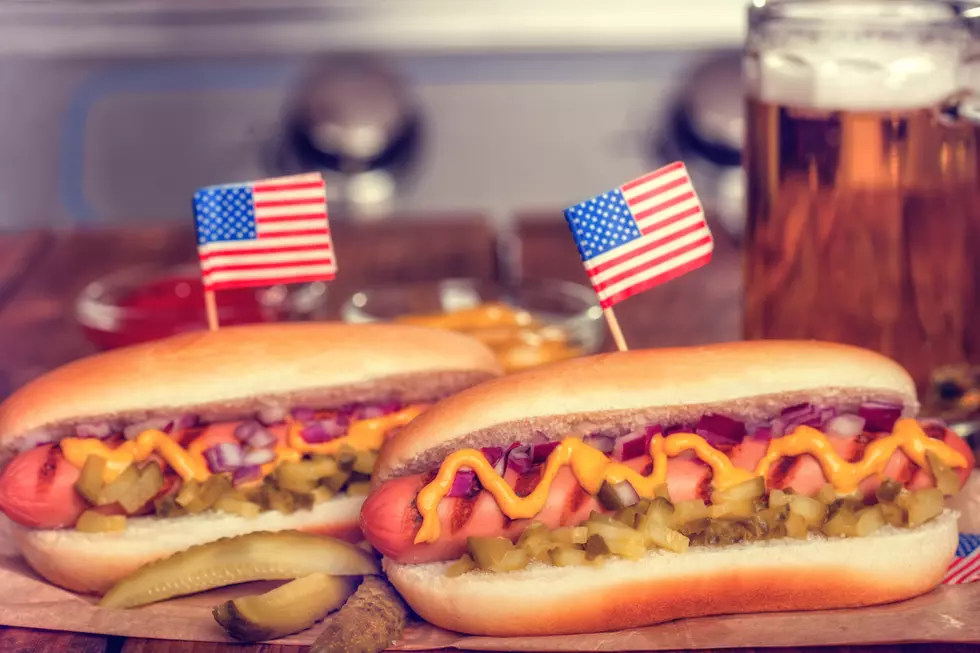
Don’t Let Food Poisoning Ruin Your 4th of July
Fireworks, parties, picnics, and cookouts...it is here! The Fourth of July is the biggest holiday of the season filled with tons of good food. But if you undercook that burger or leave the chicken or potato salad out in the heat for more than an hour or two, you could be in for some fireworks of your own. Foodborne illness is more common than you might think, sending thousands of people to the emergency room every year.
Symptoms can start anywhere from a few hours or several days after eating contaminated food. Signs of food poisoning include headaches, nausea, vomiting, diarrhea, a feeling of weakness, and fever. If you ever do experience the unpleasant symptoms of food poisoning, one of the most important things you can do is stay hydrated. If symptoms persist, don’t hesitate to get medical treatment because untreated foodborne illness can be extremely severe. Here's what you can do to prevent food poisoning this 4th of July and all year long.
- 1
DON'T CROSS CONTAMINATE
Clean your cutting board every time you need to cut a new food item. If you are cutting chicken, thoroughly clean knives and the cutting area with warm soapy water before cutting any other food.
- 2
BUY SAFELY
An easy way to prevent food poisoning is to buy food that looks safe to eat. Check expiration dates, only buy cold food when it’s properly contained, and watch out for dented cans/ripped packages. Also, be smart when placing your food in the cart and in shopping bags. Make sure the packaged meat doesn’t have holes and no items from produce are mixed with the meat.
- 3
WATCH OUT FOR THESE FOODS
Like all things, certain foods are typically associated with food poisoning. Keep an eye out when eating beef, chicken, eggs, and seafood. There can be cases when other foods become dangerous to eat, but these foods are most prominently linked to food poisoning.
- 4
BE AWARE WHEN COOKING
A mistake many of us make far too often is not realizing the correct temperature for food when prepping. If you are thawing food, either thaw your food in the refrigerator or microwave. Bacteria can grow on food that’s thawed at room temperature.
Cold food should also be kept in the refrigerator until it’s time to cook. Overcooking foods can be bad because it risks the chance of cancerous compounds forming.
- 5
RECOGNIZE FOOD THAT’S BAD
A really simple way of detecting food that you shouldn’t eat is inspecting the food. Check the food in all possible areas and if it doesn’t look or smell right, throw it away. If you see even the tiniest amount of mold on a piece of food, definitely toss it! If meat is your food choice of the night, cut it down the middle and look at the inside. Anything that’s overly raw or undercooked should not be eaten. Simple procedures can put all of us on the right path to prevent food poisoning.
- 6
USE A FOOD THERMOMETER
Cook roasts and steaks to a minimum of 145°F. All poultry should reach a safe minimum internal temperature of 165°F as measured with a food thermometer. Check the internal temperature in the innermost part of the thigh and wing and the thickest part of the breast with a food thermometer.
Cook ground meat, where bacteria can spread during grinding, to at least 160°F. Information from the Centers for Disease Control and Prevention (CDC) links eating undercooked ground beef with a higher risk of illness. Remember, color is not a reliable indicator of doneness Use a food thermometer to check the internal temperature of your burgers.
More From Lite 96.9 WFPG









